Are adverbials helpful in academic English writing?
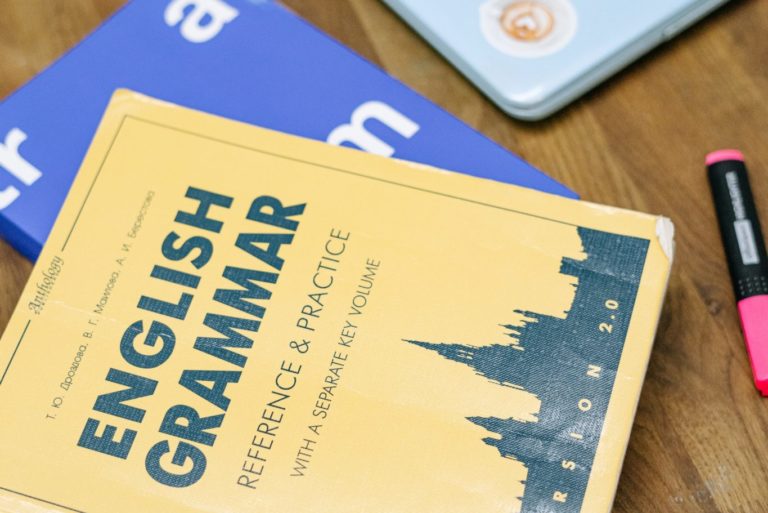
This is the second of three chapters about Adverbials and Complements. To complete this reader, read each chapter carefully and then unlock and complete our materials to check your understanding.
– Review the differences between adverbs and adverbials
– Explore the various types and distributions of adverbials
– Understand the purpose of using adverbial conjuncts and disjuncts in academic writing
Before you begin reading...
-
video and audio texts
-
knowledge checks and quizzes
-
skills practices, tasks and assignments
Chapter 2

In Chapter 1 of this short reader on adverbials and complements, we reviewed the five possible phrase functions in English, which are subjects, objects, predicates, adverbials and complements. We focussed specifically on comparing optional adverbials with their mandatory complement counterparts and offered advice for students on how to identify these two functions based on their form, purpose and distribution. In this second chapter, we next provide more comprehensive detail about adverbial phrases, exploring their various types, their flexibility within a sentence, and finally their use in academic assignments.
Are adverbs and adverbials the same?
Because they are named so similarly, students often confuse adverbs and adverbials. While these two grammar items are similar in many ways, it is important to recognise that the term ‘adverb’ denotes a word type (such as noun or adjective) and ‘adverbial’ describes a phrase function (such as subject or object). In short, like adverbs, adverbials add to the meaning of a verb by expressing its how, when, where, how often or to what extent. But where all adverbs are adverbials, not all adverbials are composed solely or exclusively of adverbs. An adverb is only one word for instance, but as the bold examples demonstrate, an adverbial may be made up of a word, a phrase or a clause:
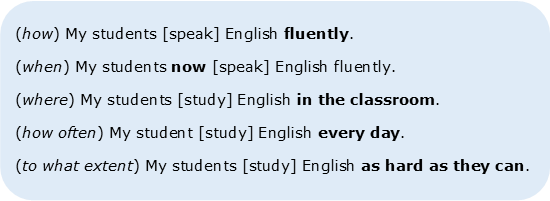
As the next diagram shows, adverbials may also be used by speakers and writers to modify adjectives, other adverbs, prepositional phrases and whole sentences:

Which elements make adverbials?
As we’ve already discussed, adverbials are not exclusively composed of adverbs – although that word type is certainly the most common element. To help students identify the remaining four adverbial elements, we’ve included examples below using adverb phrases, noun phrases, prepositional phrases and adverbials clauses:
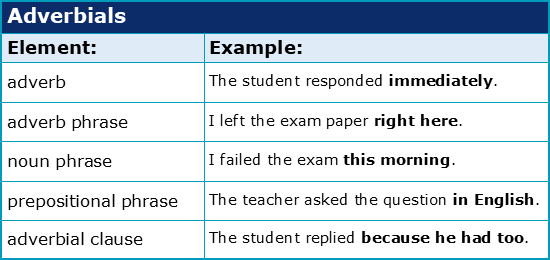
How many types of adverbial exist?
In addition to these five element patterns, it’s also possible to broadly categorise adverbials into four key types based on their specific functions.
1) Adjuncts: Adjuncts are optional adverbials which add information about an event or state in relation to its circumstances, such as its place, time, condition or manner. (‘I failed the exam this morning.’)
2) Conjuncts: These are used to join clauses together, forming logical and rhetorical relations between expressions such as addition, contrast and order. (‘Jessica studied hard; therefore, she received a good grade.’)
3) Disjuncts: Disjunct adverbials usually provide additional information about entire clauses, expressing attitudes, evaluations and probabilities. (‘Surprisingly, she failed.’)
4) Adverbial Complements: These are most often prepositional phrases (though they can also be adverbs and noun phrases) which act as key arguments of verbs, particularly for verbs of caused motion which require spatial or timescale references. (‘She put the pen in her pencil case.’)
Note that while types 1 to 3 are optional (in the sense that removing them will only disrupt meaning and not grammar), type 4 is the one mandatory kind of adverbial.

How are adverbials distributed?
Another aspect of adverbials which makes them unique and somewhat easier to identify is that they have a much greater freedom of distribution than other phrase functions. This means that they can move position within a sentence without breaking the grammar or the meaning of that expression. As the third sentence in the below examples shows, not all possibilities are always grammatical though, and some sound odder than others to native speakers:
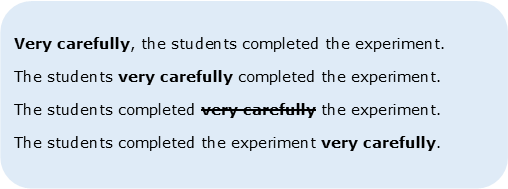
Notice also from these example expressions that some patterns require a change in the punctuation of the clause, such as how a comma (,) has been added after the adverbial ‘very carefully’ and before the subject ‘the students’ in the first sentence. It’s also worth remembering that this flexibility of distribution is only possible with type 1-3 adverbials, with type 4 adverbial complements being unable to move from their position after the verb’s direct object.
Are all adverbials useful for academic writing?
Some tutors may discourage students from using adverbials in their writing. This is because there are many adverbs which are inappropriate for use in formal contexts. Words such as ‘amazingly’, ‘interestingly’ and ‘surely’, for example, are simply too subjective or emotive for inclusion in academic assignments. Nevertheless, the four types of adverbial discussed earlier in this chapter are all used with some frequency in academic writing. Types 2 and 3 however (conjuncts and disjuncts), are particularly specific to academic contexts and are worth learning in detail.
The first, conjunct adverbials, are helpful for students because they are used to join clauses together, demonstrating logical and rhetorical relations between ideas. These adverbials can be grouped into a number of types, the most helpful of which are additive (in addition; furthermore; moreover), contrastive (however; in contrast; nevertheless), listing (finally; firstly; secondly) and resultative (as a result; consequently; therefore). Examples of each are provided for you in the table below:
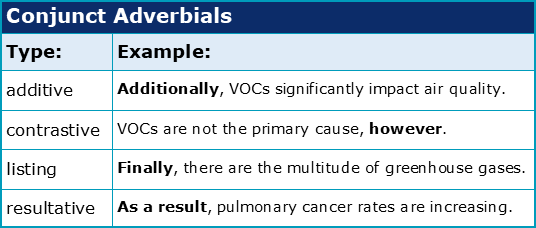
Just as helpful to writers using EAP are disjunct adverbials. Disjuncts are able to provide additional information about entire clauses, expressing important academic value judgements such as attitudes, evaluations and probabilities. They may be used to show certainty (clearly; indisputably; undeniably) or doubt (seemingly; hypothetically; theoretically), to express caution through hedging language (maybe; perhaps; possibly), to introduce source-based information (according to; evidently; reportedly) or provide writer attitudes (correctly; predictably; unexpectedly):
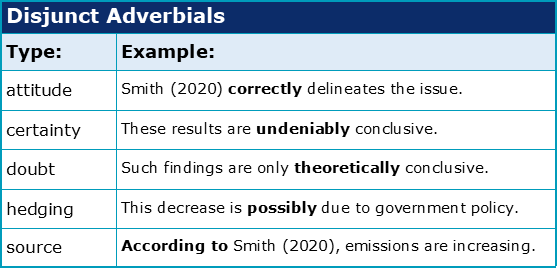
Good work on completing Chapter 2 of this short reader on adverbials and complements. In Chapter 3, the final chapter, we focus specifically on complement phrase functions and how to use them in academic settings.
Downloadables
Once you’ve completed all three chapters in this short reader about Adverbials and Complements, you might then wish to download our Chapter Worksheets to check your progress or print for your students. These professional PDF worksheets can be easily accessed for only a few Academic Marks.
Chapter 1 explores the topic: What are adverbial and complement phrases? Our Chapter 1 Worksheet (containing guidance, activities and answer keys) can be accessed here at the click of a button.
Chapter 2 explores the topic: Are adverbials helpful in academic English writing? Our Chapter 2 Worksheet (containing guidance, activities and answer keys) can be accessed here at the click of a button.
Chapter 3 explores the topic: How do subject and object complements differ? Our Chapter 3 Worksheet (containing guidance, activities and answer keys) can be accessed here at the click of a button.
To save yourself 2 Marks, click on the button below to gain unlimited access to all of our Adverbials and Complements Chapter Worksheets. This All-in-1 Pack includes every chapter, activity and answer key related to this topic in one handy and professional PDF.
Collect Academic Marks
-
100 Marks for joining
-
25 Marks for daily e-learning
-
100-200 for feedback/testimonials
-
100-500 for referring your colleages/friends